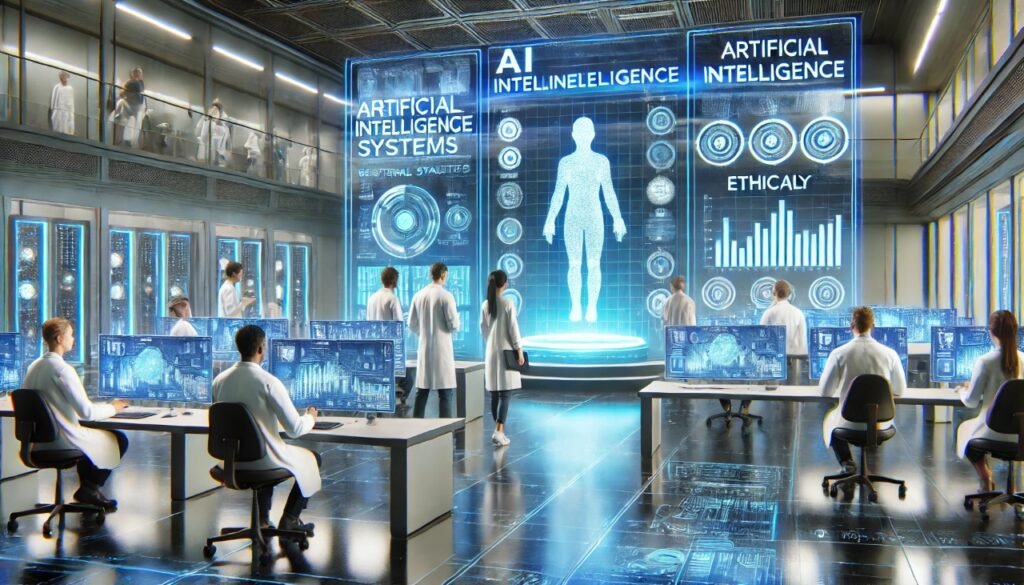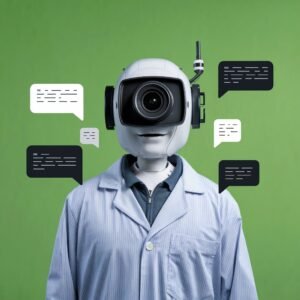Keeper AI Standards Test: New Era of Ethical AI

Keeper AI Standards Test
The Keeper AI Standards Test is revolutionizing how artificial intelligence is evaluated, ensuring that AI systems are reliable, ethical, and beneficial to society. This framework has become crucial in a world increasingly reliant on AI, balancing innovation with safety.
What is the Keeper Standards Test?
The Keeper AI Standards Test serves as a benchmark for evaluating AI models. It focuses on critical aspects like accuracy, ethical considerations, safety, and scalability. By adopting this test, organizations can confidently deploy AI systems that meet stringent regulatory and societal expectations.
Core Features of the Keeper AI Standards Test:
- Ethical Compliance: Ensures alignment with global ethical norms.
- Performance Metrics: Measures efficiency, scalability, and accuracy.
- Safety Validation: Verifies fail-safes to prevent malfunctions.
- Transparency Standards: Demands clarity in AI decision-making processes.
Why Does the Keeper AI Standards Test Matter?
As AI systems become pervasive, the risks associated with unchecked development grow. This test provides a safety net, allowing for responsible innovation while minimizing societal harm.
- Mitigation of Bias: Ensures fairness across demographics.
- Enhanced Trust: Builds public confidence in AI solutions.
- Legal Compliance: Aligns AI systems with international regulations.
- Market Advantage: Companies adhering to these standards stand out.
How the Keeper Standards Test Works
The process of applying the Keeper AI Standards Test involves three key stages. Each step ensures that AI systems are not only functional but also adhere to the highest ethical and operational standards.
1. Preliminary Evaluation
AI systems are initially assessed for their objectives and intended use cases. Developers must provide:
- Clear documentation of the model’s training data.
- Intended applications and potential limitations.
2. Comprehensive Testing
This stage involves running models through rigorous scenarios:
- Simulation of edge cases: Identifying failure points.
- Bias detection algorithms: Ensuring demographic fairness.
- Safety and reliability tests: Evaluating robustness.
3. Certification and Monitoring
Once a model passes, it receives certification. However, continuous monitoring ensures ongoing compliance as models evolve.
Applications of the Keeper Standards Test
This test applies across industries, ensuring tailored solutions meet sector-specific needs.
1. Healthcare
- Use Case: Diagnosing diseases with AI.
- Importance: Reducing diagnostic errors while protecting patient data.
2. Finance
- Use Case: Fraud detection and risk management.
- Importance: Maintaining transparency and fairness in financial systems.
3. Autonomous Vehicles
- Use Case: Navigation and safety mechanisms.
- Importance: Preventing accidents through robust testing.
4. Education
- Use Case: Adaptive learning systems.
- Importance: Ensuring accessibility and neutrality in content delivery.
Challenges in Implementing the Keeper AI Standards Test
Despite its importance, adopting the Keeper AI Standards Test is not without challenges.
- High Costs: Developing rigorous tests demands resources.
- Complexity in Regulations: Navigating global ethical standards can be daunting.
- Resistance to Change: Companies may hesitate to overhaul existing systems.
However, organizations that embrace these challenges reap long-term benefits, such as customer trust and market leadership.
Key Benefits of the Keeper Standards Test
1. Risk Reduction
The test identifies vulnerabilities before deployment, reducing risks of failures or legal repercussions.
2. Ethical AI Development
AI models adhering to these standards promote fairness, inclusivity, and transparency.
3. Enhanced Reputation
Certified AI solutions gain credibility in the marketplace, boosting adoption rates.
4. International Compatibility
This test ensures that AI systems can operate globally without legal hurdles.
How the Keeper AI Standards Test Influences AI Regulation
The test supports policymakers by providing a structured framework. Governments and regulatory bodies often use it as a foundation for creating or updating AI-related laws.
- Encourages cross-border cooperation on AI ethics.
- Streamlines compliance processes for global organizations.
- Minimizes the regulatory burden through pre-certified AI models.
How to Prepare Your AI Model for the Keeper Standards Test
If you’re an AI developer or company looking to certify your model, here’s a step-by-step preparation guide:
- Audit Your Training Data: Ensure diversity and accuracy in data sets.
- Implement Explainability Mechanisms: Make AI decisions interpretable.
- Conduct Pre-Testing: Identify weaknesses in a controlled environment.
- Engage with Ethical Experts: Collaborate with ethicists to align with standards.
- Allocate Resources: Budget for certification costs and periodic audits.
Future Prospects of the Keeper Standards Test
The Keeper AI Standards Test is poised to evolve as AI technologies advance. Emerging trends include:
- Integration with AI Regulations: Greater synergy with global laws.
- Automated Testing Tools: Leveraging AI to test AI systems.
- Expanding Ethical Criteria: Incorporating environmental sustainability into evaluations.
FAQs
What is the Keeper Standards Test?
The Keeper Standards Test evaluates AI systems for safety, ethics, and performance, ensuring responsible usage.
Why is ethical compliance crucial for AI?
Ethical compliance ensures AI benefits all demographics fairly, avoiding bias and harm.
Can small businesses afford to adopt the Keeper Standards Test?
While initially resource-intensive, the long-term benefits outweigh the costs, making it a valuable investment.
Does the test apply to all AI systems?
Yes, the Keeper Standards Test is versatile and can be adapted to various industries and AI applications.
How does this test address AI bias?
Through advanced algorithms, the test identifies and mitigates biases in training data and decision-making processes.
Will the Keeper Standards Test become mandatory?
As global regulations evolve, this test might become a standard requirement for AI deployment.
What happens if an AI model fails the test?
Models that fail are given detailed feedback for improvement and can be re-evaluated upon necessary changes.
Conclusion
The Keeper AI Standards Test is a beacon of hope in the complex AI landscape. It not only safeguards against potential risks but also paves the way for innovative, reliable, and ethical AI solutions. As industries continue to integrate AI, adherence to this standard will become indispensable.





